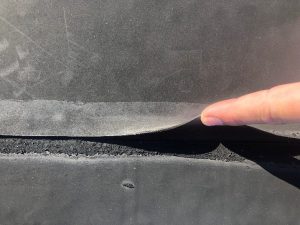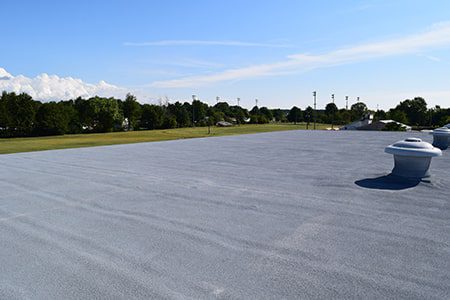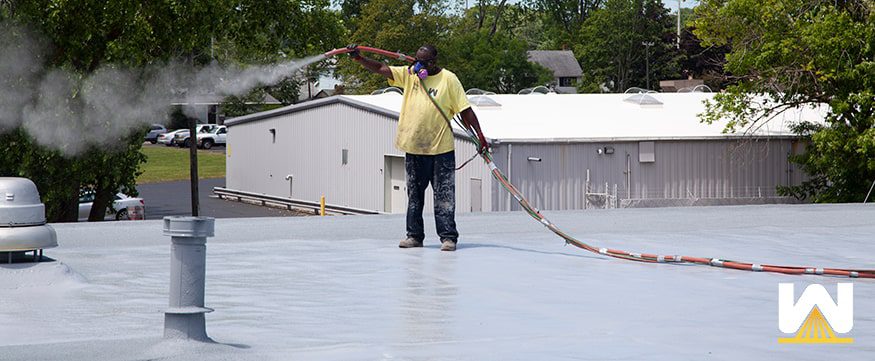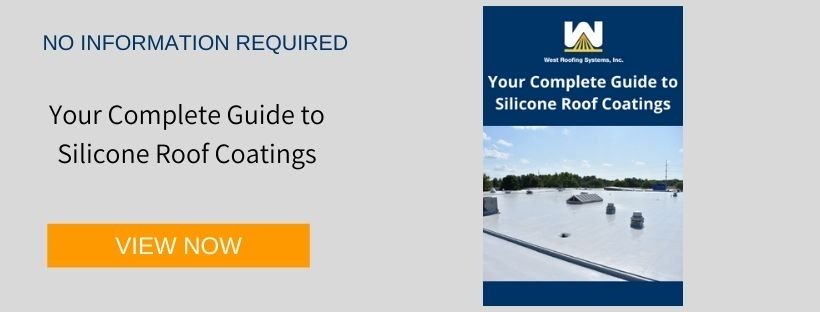Say you’ve had multiple roof leaks, they have been repaired, and now you have more leaking.
At this point, it’s more cost-effective to get a whole new roof.
But since the cost of commercial roofing systems are anywhere from $3 – $10 per square foot, you don’t want to make any wrong choices.
West Roofing Systems has been installing commercial roofing systems since 1979. In this time, we see the same mistakes building owners make.
- Building owners install the wrong roofing system
- Building owners choose the wrong roofing contractor
There are 5 mistakes about roofing systems, and 3 mistakes about roofing contractors.
Let’s get started.
Building owners choose the wrong roofing system
When you’re choosing to get a new roof, do you know which roofing system you’d like? Do you make your decision on the best roof for your current situation?
Let’s get into the 5 mistakes a building owner can make when choosing a roofing system.
Mistake #1 – Not looking at life-time cost
A bad financial decision is to pay for the absolute cheapest roofing system today but pay more long-term.
For example, a single-ply roofing system may cost $3.50 per sq. ft. and last for 10 years. At year 10, you may need to remove the entire roof and pay $3.50 per sq. ft. again.
You’ll repeat this process over and over again.
Another way to look at it is if you install a spray foam roofing system. A spray foam roof costs anywhere between $4 – $7 per sq. ft., but after 10 years, the cost to recoat the roof (so it can last 10 more years) is only about half the cost of the original installation.
You’ll repeat paying half of the cost of the original installation every 10 years, over and over again.
Here’s a table showing the life-time cost of a single-ply roofing system:
| Cost per sq. ft. | Sq. ft. of roof | Total cost | |
| Single-Ply – Year 1 | $3.50 | 20,000 | $70,000 |
| Single-Ply – Year 10 | $3.50 | 20,000 | $70,000 |
| Single-Ply – Year 20 | $3.50 | 20,000 | $70,000 |
| Single-Ply – Year 30 | $3.50 | 20,000 | $70,000 |
| $280,000 |
Here’s a table showing the life-time cost of a spray polyurethane foam roofing system:
| Cost per sq. ft. | Sq. ft. of roof | Total cost | |
| Spray foam – Year 1 | $4 | 20,000 | $80,000 |
| Spray foam – Year 10 | $2 | 20,000 | $40,000 |
| Spray foam – Year 20 | $2 | 20,000 | $40,000 |
| Spray foam – Year 30 | $2 | 20,000 | $40,000 |
| $200,000 |
- $280,000 vs $200,000 over a 30-year period.
- $80,000 in total savings vs paying $10,000 less on the initial installation.
Hopefully, you can see that spending $10,000 more today, will save you $80,000 over 30 years. Not considering this option is a mistake some building owners make.
Mistake #2 – Not considering the projected energy savings
Did you know that a “cool” roof can save 15-30% on your energy bills each month?
Over 30 years, there are 360 months.
Ask your accounting department to do the math and see how much you would save over 30 years by reducing your energy costs by 15%, and by 30%. Somewhere in between these numbers are what you could save.
I’m sure the amount is tremendous! But why?
A “cool” roof is when the most outer layer is a lighter color, usually white or gray, which has more reflectivity than a roof that is black.
Here is a video from the Department of Energy explaining “cool” roofs, deck temperature, and energy savings:
Mistake #3 – Not worrying about the probability of a leak
A roof leak can happen anywhere in your building. In the bathroom, business office #3, anywhere.
But where water has the first opportunity to enter your building usually happens in a few common areas. These areas are the seams and penetrations.
Over time, seams on a roofing system lose adhesion and begin to come apart. Once this happens, water can enter your insulation, travel horizontally through your insulation, and eventually reach your deck and enter the building in many different areas.

Penetrations are no different.
A penetration is anything that comes through the roofing system. The most common penetrations are ducts, exhausts, and HVAC units.
These areas require custom detailing (such as cutting and fitting) for a traditional roofing system to fit around these areas and be watertight.
One roofing system that has no seams, and fits around penetrations with ease, making the entire roofing system one layer is a spray foam roof.
Here’s what a finished spray foam roof looks like (no seams):

Here’s how spray foam encapsulates a penetration, making it become part of the roofing system (no cutting or fitting needed):
An advantage that a spray foam roofing system has is that it has closed-cell properties.
This means that if the spray foam gets a crack or has a small hole, the water is confined to that area. The water will not travel horizontally and saturate your insulation.
If you notice a small crack/hole (or if you have a maintenance program that identifies them), all you need to do is use a cutting knife to remove the area around the crack, make sure the area is dry, and then fill the area with caulk or silicone. Smooth the area out and you’re done.
On a single-ply roofing system, that water can travel anywhere, which means that a large portion of your insulation will need to be removed. This type of repair is very costly, time-consuming, and it’s usually hard to detect where the saturation ends.
Mistake #4 – Only wanting a familiar roofing system
We understand that change is hard. Start working out, eating better, spend more time with family, start saving more money, etc.
It’s easy to do the same things we’re doing today.
But usually making a change is for the better. It’s just hard to change your routine or the way you look at things.
You may not agree with us, but this happens when building owners choose a roofing system.
The building has always had a tar and gravel roof, so when it begins leaking, let’s install a new tar and gravel roof.
Or they grew up learning about the different types of single-ply systems and just believe that since they know the most about single-ply, that this type of roof should be installed on their building.
I would encourage you to think outside the box and think about all the different kinds of roofing systems that are available, such as:
- EPDM
- TPO
- Spray foam
- Metal
- Gravel built-up
Learn about the pros and cons of each, and then decide which roofing system will provide the most benefits for your business.
Mistake #5 – Not worrying about the environment
We know that doing what’s good for the environment isn’t always the best for the bottom line. Think about how much a sedan costs for a Tesla vs other popular manufacturers.
Sure, it’s good for the environment because a Tesla doesn’t use gas, but the price doesn’t justify the gas savings.
However, you can help the environment AND your bottom line with a spray foam roof.
How?
A spray foam roof is installed OVER an existing roof, therefore there’s no need to tear off your existing roof and transport all those materials to landfills.
NOTE: sometimes there is some roof removal due to areas of the roof with saturated insulation, but a spray foam roof is installed with the minimum amount of roof tear off available.
Other roofing systems will remove 100% of your existing roof, which is not only expensive because of the costs of labor, but it’s bad for the environment.
Here’s a video of a spray foam roof being installed over an existing roof:
Building owners choose the wrong roofing contractor
The worst-case scenario for a building owner is to have a leaking roof…and they hire the wrong roofing contractor.
Perhaps your new roof was supposed to last 20 years, but since it was installed wrong, it only lasted 5 years.
Perhaps you need to get a hold of the roofing contractor to make a few repairs or to make a warranty claim, and you find out they are out of business.
These scenarios happen all the time.
Below we hope to inform you about the characteristics of a good (and bad) roofing contractor so you can make the best decision.
Mistake #1 – Paying for an unnecessary tear off
A rule of thumb is that if your roof is more than 25% saturated, you’re better off tearing off the entire roof and starting over.
Why?
A large portion of the roof is in bad shape and the remainder of the roof is probably not too far behind. Plus, large repairs are expensive to where only a fraction more and you can get everything brand new.
A problem that happens is that a roofing contractor suggests a complete tear off when you don’t need to.
If the roof is under 25% saturated, in most cases it’s beneficial to make repairs or to install a roofing system over top of your existing roof (such as a spray foam roof or silicone restoration membrane).
An infrared inspection can tell you how much of the roof is saturated.
Before you agree (or disagree) to tear off your roof, make sure you get information that justifies the reasoning one way or the other.
Mistake #2 – Only choosing the cheapest roofing contractor
In everything we purchase, we always want the lowest price possible, but only if the value is justified.
For more expensive purchases, a higher price point is justifiable because of the financial problems that can happen if something goes wrong.
If you’re going to pay $100,000 for a new roof, you need to be sure it’s installed correctly.
What if the roof isn’t installed correctly? What if the roofing contractor isn’t in business anymore?
You would be stuck with a leaking roof and no contractor to make repairs.
A better decision is to pay a little more for a roofing contractor that has been in business for decades who isn’t going away anytime soon.
There are two reasons why one contractor can be more expensive than another, such as:
- They have more experienced workers
- They use only the best materials
More experienced crews + better products + company isn’t going anywhere = a justifiable higher expense.
Mistake #3 – Not having an internal service department
Just like your car, your roof needs routine maintenance to perform as it should. If maintenance is avoided, the roof will not last as long as if it were maintained.
How long would your car last if you never changed the oil?
How long would your car last if you did change the oil when the manufacturer suggested to do so?
The same type of longevity happens with your roof.
The problem that some building owners make is that they get a roof done by a contractor who doesn’t have their own service department.
When they don’t have their own service department, they will pull a guy off of a job to service your roof, or they will outsource the work.
It’s beneficial to work with a contractor who has roofers that are always available to service your roof. And it’s nice to have dedicated service roofers who have been on your roof year after year.
They know the ins and outs of your roof, where previous service was performed at, what areas of the roof to look out for, where the strong/weak areas of the roof are, etc.
Routine maintenance is very important to get the most out of your roof. If this is subpar, the health of your roof will suffer.
Which roofing system and roofing contractor is right for you?
We hope that this article has helped you identify which roofing system is right for you, and the characteristics of the roofing contractor that will be most beneficial to you.
If you have any questions, you can leave them in the comments, and we’ll answer them as soon as possible.
Before you go, here’s a quick recap of what we covered:
The 5 mistakes building owners make in choosing a roofing system:
- They don’t consider life-time cost
- They don’t worry about energy savings
- They don’t look at the probability of a leak
- They only choose a roofing system they are familiar with
- They don’t worry about the environment
The 3 mistakes building owners make in choosing a roofing contractor:
- They choose a contractor who unnecessarily makes them 100% tear off the roof
- They only choose the cheapest roofing contractor
- They choose a roofing contractor with no dedicated service department
Ready to take the next step in your commercial roofing journey? We have two amazing eBooks that you can view without providing any information:



